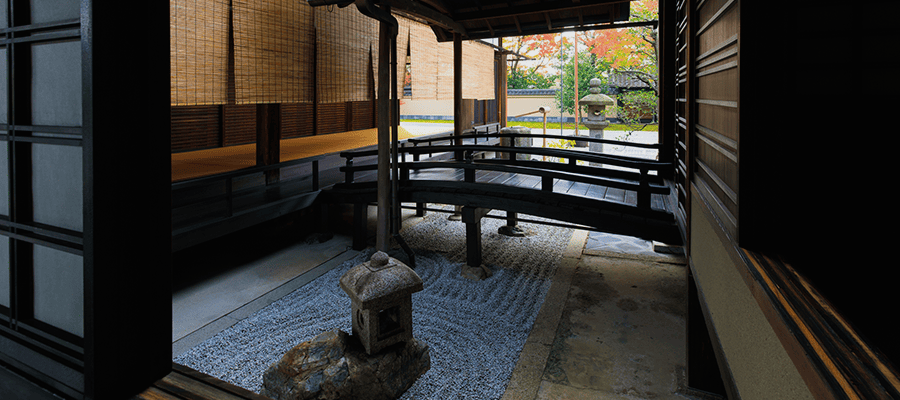Oubai-in’s history began with the prayers of young Oda Nobunaga and was later carried on by Toyotomi Hideyoshi.
It is a place where the stories woven by legendary Sengoku-period warlords still resonate.
Daitoku-ji Oubai-in Temple
History
HISTORY
-
 A Hermitage Bearing the Prayers of a Young NobunagaThe story of Oubai-in begins in 1562, when a 28-year-old Oda Nobunaga entered Kyoto for the first time. To pray for the repose of the soul of his late father, Oda Nobuhide, he built a small hermitage called "Oubai-an" within the grounds of Daitoku-ji Temple. At that time, he was still on the path to unifying the country. Nobunaga’s heart, even amid the storms of the Warring States, must have carried an unwavering sense of devotion to his family.
A Hermitage Bearing the Prayers of a Young NobunagaThe story of Oubai-in begins in 1562, when a 28-year-old Oda Nobunaga entered Kyoto for the first time. To pray for the repose of the soul of his late father, Oda Nobuhide, he built a small hermitage called "Oubai-an" within the grounds of Daitoku-ji Temple. At that time, he was still on the path to unifying the country. Nobunaga’s heart, even amid the storms of the Warring States, must have carried an unwavering sense of devotion to his family. -
 Toru Miyake PhotographyThe Will Inherited by HideyoshiIn 1582, after Nobunaga's downfall in the Honno-ji Incident, Hashiba Hideyoshi (later known as Toyotomi Hideyoshi), who rose to power from among Nobunaga’s retainers, expanded this hermitage and re-established it as Oubai-in in 1589. For Hideyoshi, it may have been more than just a temple; it might have served as a place to eternally preserve his bond with Nobunaga.
Toru Miyake PhotographyThe Will Inherited by HideyoshiIn 1582, after Nobunaga's downfall in the Honno-ji Incident, Hashiba Hideyoshi (later known as Toyotomi Hideyoshi), who rose to power from among Nobunaga’s retainers, expanded this hermitage and re-established it as Oubai-in in 1589. For Hideyoshi, it may have been more than just a temple; it might have served as a place to eternally preserve his bond with Nobunaga. -
 Toru Miyake PhotographyA Temple with Deep Ties to Renowned Sengoku WarlordsLater, Kobayakawa Takakage, the third son of the famed warlord Mori Motonari—who rose from a regional lord to rule over one-tenth of Japan—contributed to the development of the temple, which eventually came to serve as the Mori family’s ancestral temple. The temple’s bell tower still houses a large hanging bell, a gift from Kato Kiyomasa, a warrior renowned for his bravery. This temple stands apart as a quiet resting place where the memory of illustrious military commanders lingers, and where even today one can almost hear echoes of their presence.
Toru Miyake PhotographyA Temple with Deep Ties to Renowned Sengoku WarlordsLater, Kobayakawa Takakage, the third son of the famed warlord Mori Motonari—who rose from a regional lord to rule over one-tenth of Japan—contributed to the development of the temple, which eventually came to serve as the Mori family’s ancestral temple. The temple’s bell tower still houses a large hanging bell, a gift from Kato Kiyomasa, a warrior renowned for his bravery. This temple stands apart as a quiet resting place where the memory of illustrious military commanders lingers, and where even today one can almost hear echoes of their presence.